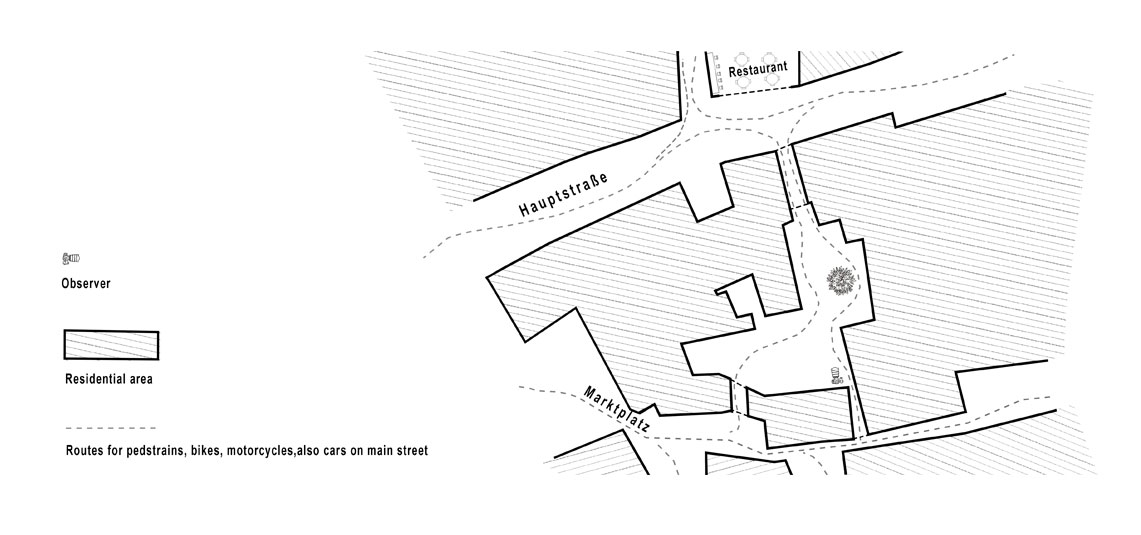Finding openings, cozy corners, and convex areas in the old town of Ladenburg is not difficult. For my experience, I selected one of these corners where I could experience different feelings during the day and night. The central courtyard leads to a narrow alley on one side and a main street in the city on the other. From the corner where I chose to record my video, commuting to the restaurant, whose main entrance was from the main street, is apparent: customers who are eating and talking around tables, waiters taking care of this small ambient, the concentrated light in the horizon of my vision and different degrees of shadows on the walls, ground and whatever is in the yard. I should add the conversations that are heard vaguely and unclear from afar. During the day, however, the courtyard was full of passers-by, and I saw more movements in a crowded street and also in the yard that was the shortest passageway to connect people from the narrow rear alley to the shops in the main street and main square of the old town. The yard hosts also the children and, for them, becomes the central place of their plays during the day.
My different day and night experience of the same space was laid in the physical removal of a depth(a main street of the city) which was the site of a large part of the day's commuting. A comprehensive experience only can be gained within a whole spectacle, as Merleau-Ponty states:
"The superficial pellicle of the visible is only for my vision and for my body. But the depth beneath this surface contains my body and hence contains my vision. My body as a visible thing is contained within the full spectacle" (138).
My daytime bodily motion in the spaces between the places and the things completed my experience and returned the hidden dimension to the vision and experience of the space.
From the perspective of my position, the elimination of the depth (the main street in front of the restaurant) was a visual illusion created by a play between light and shadow. The illuminated end in the frame I captured takes the warm brightness from the hidden street and not the restaurant's light. From where I was standing, the restaurant seemed to be at the end of a dead-end alley, with a courtyard before its main entrance that hosted overnight guests, and a neighbor, who constantly visits the restaurant, seemed to be in a hurry to get the latest news of the day in the neighborhood. She is standing on the main street, not at the end of a dead-end alley and when she wants to get by my camera frame, her glance at me shows that my presence there did not surprise her. At the same time, she seemed unaware of it. Her glance proves my experience that everything around me is watching me as I watch the world from this corner. I also am perceived by the things around my body gradually and by penetrating to my depth by them. "I who see have my own depth also" (135). I compensated for this illusion by combining the sounds of the day in the video to link my day experience to the night. This peculiar combination reflects the potential of such space design for its residents.
Reference: Merleau-Ponty, Maurice. The visible and the invisible: Followed by working notes. Northwestern University Press, 1968.
link : https://youtu.be/ljQutNyO3rw
Remains of the day
